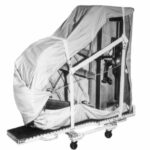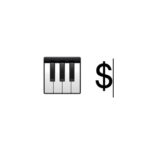Moving into a new home is stressful enough, and the last thing you want to worry about is the condition of your piano once you’ve finally started unpacking. However, whether we realize it or not, the process of relocating your instrument can have a large impact on its ability to retain sound. Therefore, it’s important that you have an understanding of why your piano needs tuning after a move and the factors that affect its playability.
Changes in Temperature
When your piano changes locations, it’s also often put through a change in temperature. This causes its wooden components to expand or contract, which changes the amount of tension in its strings. Though this stretching is rarely severe enough to damage the piano as a whole, it does result in the strings losing their tune.
Fluctuations in Humidity
Humidity also plays a key role in a piano’s ability to maintain its tune. As with temperature, increased moisture in the air makes the wood expand, putting extra strain on the position of the strings. The strings will stretch, and their sound will suffer, meaning it’s always a good idea to get your piano tuned if you’re moving to an area with higher humidity.
Stressful Transportation Conditions
Another reason why your piano needs tuning after a move is the stress it experiences while being transported to your new home. Though we hope that our precious instruments are treated with care on the road, it’s very likely that the driver will hit one or two bumps along the way. This rustling of components can cause damage to the piano’s strings or even bend a few tuning pins, which will throw the soundboard into disarray. So, you’ll need a professional to help get everything back in playing order after your piano arrives at its new home.
Assurance of Proper Reassembly
Ultimately, you may want to get your piano tuned after moving just so you can rest easy knowing everything is in its proper condition. As we previously stated, the transportation process exposes acoustic pianos to a series of different hazards. Therefore, it’s often in your best interest to get it checked out anyway. Even if you don’t notice any issues on the surface, it’s still possible that your piano could’ve sustained internal damage that will need to be addressed.
At Chicago Piano Tuners, we’re well-acquainted with the various conditions that cause acoustic pianos to fall out of tune. Because of this, we seek to not only provide affordable piano tuning services, but also the knowledge on how to keep them in peak performing condition. This way, you can rest assured that you will always have access to the resources to properly care for your instrument.








